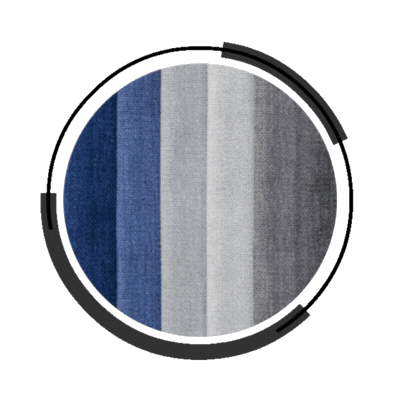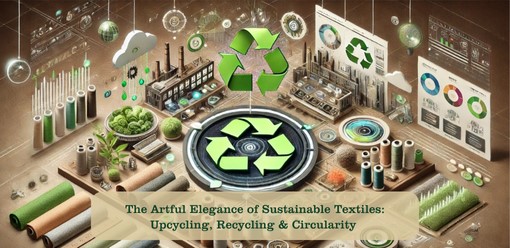


Textiles are more than just materials; they represent a
canvas for creativity, a resource for innovation, and an opportunity to embrace
sustainability. In today’s era of mindful consumption, upcycling, recycling,
and optimizing material usage in fabrics, yarns, trims, and accessories are
redefining how we view and value the textile industry.
A Journey Toward
Sustainability
The textile industry has historically been
resource-intensive, but a shift is underway. The principles of upcycling and
recycling breathe new life into discarded materials, while circularity
emphasizes designing products for reuse, repair, and regeneration. This
transformation not only minimizes waste but also preserves the artistry and
craftsmanship embedded in textiles.
The Power of
Upcycling
Upcycling transforms excess, unsold, or discarded fabrics,
yarns, trims, and accessories into something new and valuable.
Examples of Upcycling
in Textiles:
● Leftover
fabrics from production lines can be crafted into unique, limited-edition
garments or accessories.
● Scraps of
trims and embellishments can be used to create intricate patchwork designs or
decorative accents.
● Unused
yarns can be repurposed into woven products, from home décor to fashion items.
By upcycling, we celebrate creativity while reducing the
demand for virgin materials, making the textile process more sustainable.
Recycling: Closing
the Loop
Recycling plays a crucial role in minimizing textile waste.
Instead of letting discarded materials end up in landfills, recycling gives
them a second life:
● Fabric
Recycling: Old garments can be shredded and re-spun into new fibers for weaving
or knitting.
● Trim
Recycling: Buttons, zippers, and embellishments can be salvaged and reused in
new designs.
● Accessory
Reinvention: Damaged accessories can be disassembled, and components like beads
or hardware can be incorporated into fresh creations.
Recycling encourages a closed-loop system, reducing the
environmental impact of the textile industry while fostering a culture of reuse.
Circularity:
Designing for the Future
Circularity is about creating textiles with their entire
lifecycle in mind. From design to disposal, every step emphasizes resource efficiency
and waste reduction:
● Smart
Design: Fabrics and trims are designed to be disassembled, repaired, or
upcycled with ease.
● Material
Optimization: Pattern cutting techniques and production processes minimize
waste.
● Renewable
Resources: Organic and biodegradable materials reduce environmental harm when
textiles reach the end of their life.
This shift from linear to circular models ensures that
textiles remain valuable, even when their original purpose has ended.
Sustainability in
Fashion and Beyond
Sustainable practices, including upcycling and recycling,
are gaining traction in fashion. Brands and designers are embracing these
methods to create collections that are not only stylish but also
environmentally responsible.
Key Benefits of Sustainable
Textile Practices:
Reducing
landfill waste.
Conserving
water and energy.
Supporting
artisans and small-scale producers through handcrafted upcycling projects.
Promoting
ethical fashion by valuing every piece of material.
Conclusion: A Future
Woven with Purpose
Textile sustainability is more than a trend—it’s a movement
toward a more responsible, creative, and resourceful industry. Upcycling,
recycling, and circularity showcase the beauty of transforming waste into
opportunity, reducing our environmental footprint while celebrating human
ingenuity.
Whether you’re a designer, manufacturer, or consumer,
embracing these principles opens up a world of possibilities to create,
innovate, and contribute to a more sustainable future. So, let’s thread the
needle of change and craft a textile industry that’s as enduring as it is
inspiring.
Tap the link below
https://sowtex.com/ready-stocks
